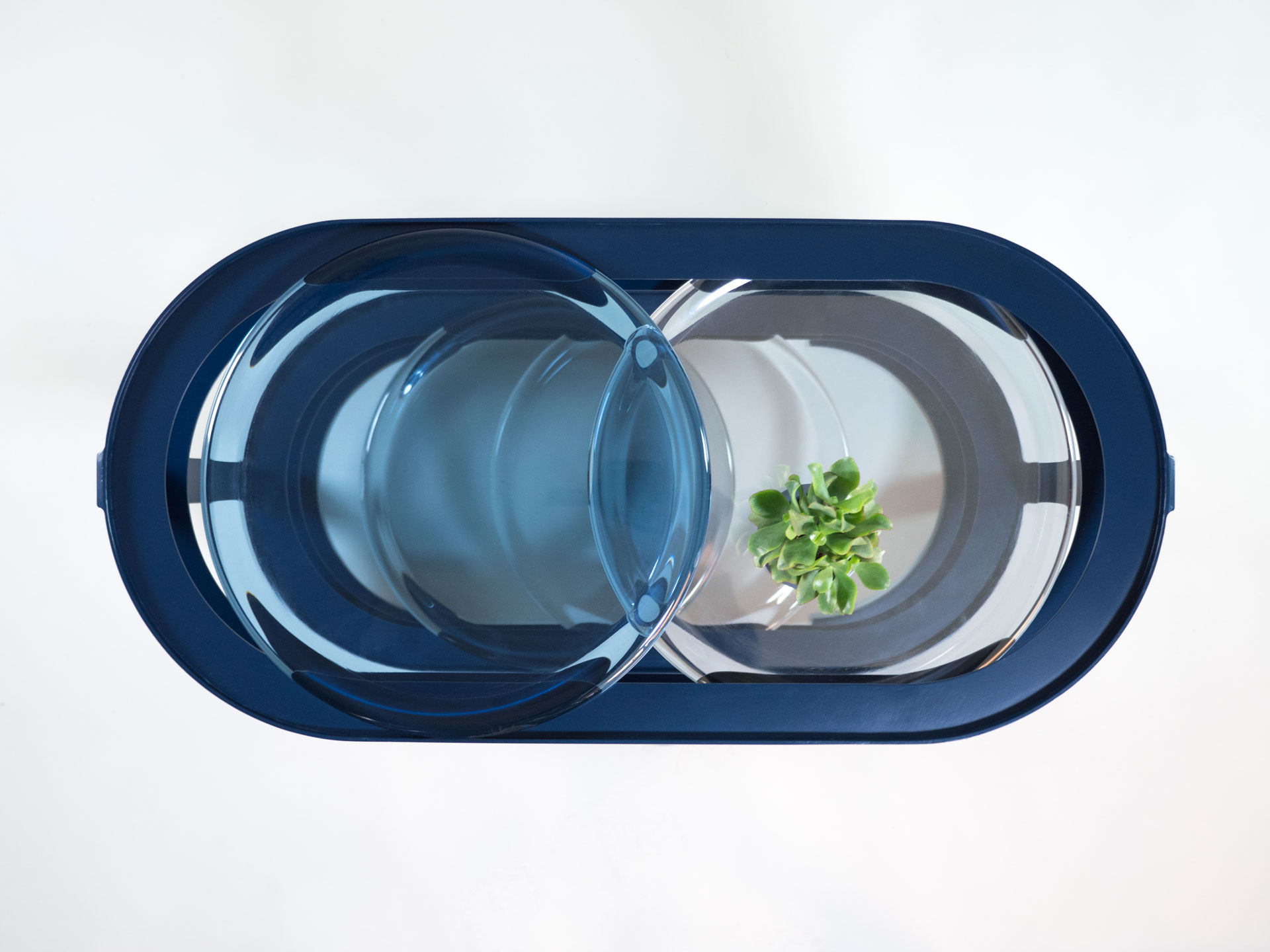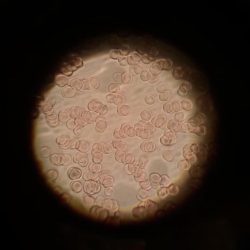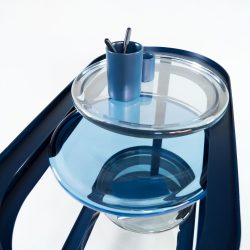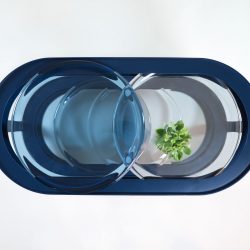Objektträger
Description
The side table „Objektträger“ is the result of analysis of structures in the human blood, which are visible through the magnification of the microscope.What is the Topic?
The theme of mimesis will be reflected in the design through the visual impressions of blood cells (erythrocytes) as well as through the visualization of dimensions through microscopy and will focus on searching for forms and behaviours from these areas to use as inspiration. The aim is to imitate this collection of sources of inspiration and to create a representative product. The design process is determined by this approach, which in the course of development led to a concrete product (side table).
Why does it look like this?
In the spirit of the construction of a microscope, the table frame was divided into levels. The central visual feature of the design is the table tops. As a formative element, they refer to the red blood cells (erythrocytes) and reproduce them in their design. The concave surface of the glass plates creates a slightly raised edge that protects items from falling down. The table tops can be exchanged, moved and added according. If the table is viewed from different positions and angles, the overlapping of the glass table tops creates different pairings and transparencies, as well as the structure
What is special?
I give the design a personal touch. At the beginning of the process, I used my own blood for microscopy and created the design characteristics. This personal touch extended until the final presentation, where the self-experiment of microscopy was also part of the installation. Furthermore, the focus on the design process that closely reflects the optical and functional characteristics of the inspiration in the final design. Example: "The transparent, circular erythrocytes generate the association of glass. The microscope becomes the table frame and the blood becomes the glass plate resting on it […].” “The strong magnification of the red blood cells to the size of a tabletop brings a displacement of the dimension, the user finds himself in the inner structure of the human organism. In the examination, the user interacts with the microscope by exchanging samples, adjusting magnification and focusing. This interaction will also be integrated into the design[…].“
What is new?
The fascination was the development in process. To design a product through the process and the pure inspiration of visual impressions and not defining a product in advance resulted in an incredible added value for me. This way of designing is very valuable.





